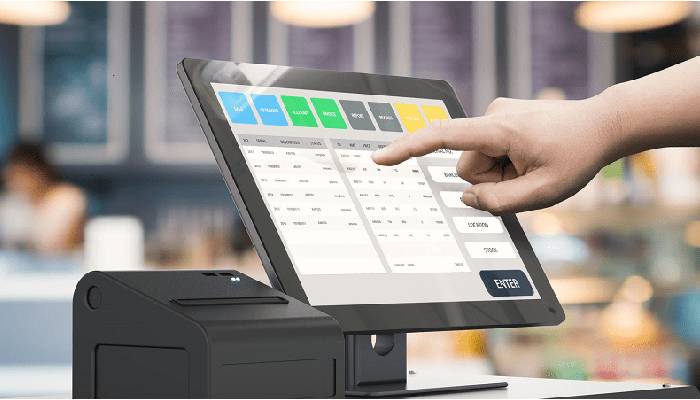MENA Infrastructure 3D Printing Market Industry Analysis (2019-2025)

Research report presented by UnivDatos, Emphasis on Component ((Product (Professional/Industrial Printer, Personal/Desktop 3D Printers), Material (Polymer, Plastic, Metals and Alloys, Ceramic, Other Materials), Technology ( Fused Deposition Modelling, Selective Laser Sintering, Stereolithography, Electron Beam Melting, Laminated object Manufacturing, Other Technologies), Application (Functional Parts Manufacturing, Fit and Assembly, Prototype Modelling, Research, Model Casting, Visual Aids, Presentation Modelling, Other Applications), Construction Method (Extrusion, Powder Bonding), Practice Area (Construction, Architecture, Others), End-User Sector (Commercial, Residential, Industrial, Others) and Geographical analysis (key regions and countries).
As per the research report, MENA Infrastructure 3D Printing Market was valued at US$ 37.54 Million in 2018 and is anticipated to reach US$ 103.7 Million by 2025 displaying a reasonable CAGR of 13.5% over the forecast period (2019-2025). 3D printing, also known as additive manufacturing, is a collection of methods for creating three-dimensional structures using a three-dimensional model or other computer data sources. Multiple layers of various printing materials are shaped under machine control to create a 3-dimensional structure in the case of 3D printing. According to International Data Corporation (IDC), investment on 3D printing in the Middle East and Africa (MEA) is expected to rise from US$470 million in 2015 to US$1.3 billion by 2019. 3D printing is increasingly gaining traction in fields involving physical parts, all the way up to large-scale manufacturing. Concrete, steel, and ceramics are only a few of the products that new printing methods can accommodate. Designers need to represent and imagine the object in 3D, so 3D printing and its use in the construction/infrastructure industry has seen widespread acceptance. Construction is a promising opportunity for 3D printing because the majority of the knowledge used to produce an object is generated during the design process, and the industry is already familiar with computer-aided manufacturing. Furthermore, the advent of building information modeling (BIM) will open up a slew of new possibilities for the construction/infrastructure sector's use of technology. 3D printing technology is used in the design industry to create construction parts or to print the whole building frame. The use of 3D printing technology is seen as a potential response to the global housing crisis.
For complete research, request for Sample of the report browse through – https://univdatos.com/request_form/form/309
Benefits of 3D Printing in the Construction Sector
- Labor Efficiency: Based on the statement’s information given by Winsun, 3D printing can reduce labor and material cost by 90% and 50% respectively, the opportunity cost savings are projected at £19,000 (US$ 24,794.15) labor wise and £7,400 (US$ 9,656.67) material-wise, adding up to a total of £26,400 (US$ 34,450.81) per unit house
- Time and Costs Savings: The application of 3D printing is projected to effectively reduce the overall expenditures of construction projects. Companies have implemented 3D printing to reduce the material cost by almost half of the original cost
- Environmental/ Economic Aspects: Emerging 3D printing firms such as Winsun and CyBe are developing new innovations to increase the usage of cheaper and recycled resources, such as mixed clay and fly ash, to create optimized concrete
- Design Complexity: Many architectural projects are rejected either because of excessive cost or design complexity, but with the use of 3D printing this may not be the case. 3D printing would introduce an array of complex and haling designs that are only limited by the designer’s imagination and computer design capabilities. Designs can be easily programmed and achieved by 3D printing
The implementation of 3D printing technology in the Construction/Infrastructure sector in the MENA region is being driven by increasing investment in product creation and R&D operations, rising regulatory funding from national and local government bodies, and infrastructure development in the region. Furthermore, with the establishment of AED 6 million (US$ 1.63 million) Concretive Middle East, a collaboration between Freyssinet, e-construct, and Draw Link Group, concrete 3D printing is going to an industrial scale in the UAE.
“Amongst component type, product (Printer) segment dominated the market, accounting for 36.4% share in 2018”
The report divides the MENA infrastructure 3D Printing market into product, content, service, and other segments based on component (software). The product category led the industry in 2018 and is projected to continue to do so in the forecast period 2019-2025.
“Professional Printers was the most used printer type, followed by desktop printers”
The industry is divided into Professional/Industrial Printers and Personal/Desktop 3D Printers based on the commodity (printer). Professional/Industrial Printers led the MENA Infrastructure 3D Printing industry and are expected to continue to do so for the duration of the study. During the forecasted era, the Desktop 3D Printer market is projected to expand at a CAGR of 15.2 percent.
For a detailed analysis of the applications in the MENA Infrastructure 3D Printing Market browse through – https://univdatos.com/report/mena-infrastructure-3d-printing-market-current-scenario-and-forecast-2019-2025
“Amongst material type, the concrete segment accounted for 33.7% in 2018 and is projected to dominate the MENA Infrastructure 3D Printing market by 2025.”
The study divides the MENA Infrastructure 3D Printing industry into concrete, plastic, metal and alloys, ceramic, and others based on material form. The concrete segment led the market in 2018, but the ceramic segment is projected to rise at a CAGR of 15.5 percent over the forecasted span. The industry is divided into two types of services: custom design and manufacturing and after-sales support. In the MENA Infrastructure 3D Printing industry, Custom Design and Manufacturing produced revenue of US$ 4.06 million in 2018.
“Fused Deposition Modelling technology dominated the market with a 31.6% share in 2018”
Fused Deposition Modelling, selective laser sintering, stereolithography, electron beam melting, and laminated object production are among the technologies used in the MENA infrastructure 3D Printing industry. Fused Deposition Modelling technology led the industry in 2018, but Electron Beam Melting technology is predicted to rise at the fastest rate of 15.9% over the forecast period.
“Amongst application type, Functional Parts are anticipated to dominate the MENA Infrastructure 3D Printing market by 2025.”
The industry is divided into Functional Parts, Fit and Assembly, Prototype Modelling, Training & Consulting, Metal Casting, Metal Casting, Visual Aids, and Presentation Modelling, depending on the application category. In the regional 3D printing industry in 2018, practical parts had the largest share, led by fit and assembly. However, due to the growing trend, the Oncology application form will grow during the prediction.
“Amongst construction method type, Extrusion method dominated the market and is expected to retain dominance throughout the forecast period”
The industry is split into two categories based on the construction method: extrusion and powder bonding. In 2018, the extrusion type had the highest share of 72.1 percent. During the forecasted duration of 2019-2025, the segment is projected to rise at the fastest CAGR. The MENA Infrastructure 3D Printing industry is divided into design, architecture, and other practise areas. The construction industry led the market in 2018, bringing in US$ 28.89 million in sales. The MENA Infrastructure 3D Printing industry is further divided into consumer, residential, manufacturing, and other end-users. In 2018, the commercial segment dominated the market; however, during the analysed timeframe, the residential sector is projected to see the highest adoption of 3D printing in the MENA region.
“UAE represents one of the largest markets of MENA Infrastructure 3D Printing industry”
The MENA Infrastructure 3D Printing industry is examined in terms of its reach in countries such as the United Arab Emirates, Qatar, Saudi Arabia, Kuwait, Egypt, Algeria, and the rest of the Middle East and North Africa. In the MENA field, the UAE is the most advanced user of 3D printing technology. In 2018, the UAE had an 18.4 percent share of the MENA Infrastructure 3D Printing market. Saudi Arabia, Qatar, and Egypt, among others, are important markets in the field, with many research and development programmes aimed at revolutionising advanced technology applications in the construction industry. The first 3D printing office was installed in Dubai in 2016. (UAE).
Customization Options:
UMI understands that you may have your own business need, hence we also provide fully customized solutions to clients. The MENA Infrastructure 3D Printing Market can be customized to an additional country level or any other market segment.
Table of Contents
Chapter 1 Market Introduction
Chapter 2 Research Methodology or Assumption
Chapter 3 Industry Performance
Chapter 4 Executive Summary
Chapter 5 Market Overview
Chapter 6 Demand and Supply Side Analysis
Chapter 7 Top News Related To 3d Printing in Middle East And North Africa Region
Chapter 8 Mena Infrastructure 3d Printing Value Chain
Chapter 9 Market Insights, By Component (Us$)
Chapter 10 Market Insights, By Technology Type (Us$)
Chapter 11 Market Insights, By Application Type (Us$)
Chapter 12 Market Insights, By Construction Method (Us$)
Chapter 13 Market Insights, By Practice Area (Us$)
Chapter 14 Market Insights, By End User Sector (Us$)
Chapter 15 Market Insights, By Country
Chapter 16 Competitive Scenario
Chapter 17 Top Company Profiles - 3D Systems Corporation, 3D Vinci Creation, BESIX Group, COBOD International, CyBe Construction, Generation 3D, Massivit 3D Printing Technologies Ltd

Zinc is a groundbreaking essential mineral that is essential for wellness and a healthy lifestyle?
- Nowadays several types of Omega 3 supplements are available in India, So it becomes important to choose the right kind for you.

Ajit Prabhu Scholarship Basic foundation Educational background and Money Chances
- what your location is contemplating using your certification study course, to learn. They will surely know the requirements and be able to give you

I Wish I Could Tell You a Better Story3
- My current girlfriend does have a job but she doesn’t have a job that can pay for the lifestyle she likes, so I do find myself supp

Micro-entrepreneur, how to choose your invoicing software?
- This is the last essential point in the process of choosing your best invoicing software for small business.